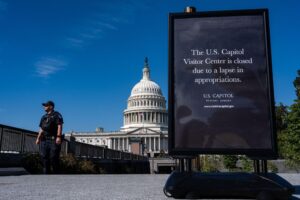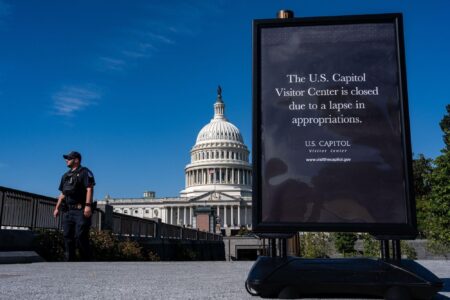Surge in Hate Crimes Across the United States: An In-Depth Analysis of 2021 FBI Findings
Unprecedented Rise in Hate Crimes Documented by FBI in 2021
The United States experienced a significant escalation in hate crime incidents in 2021, reaching levels not seen in over ten years, according to the latest FBI statistics. This troubling trend reflects intensifying social fractures, with offenses motivated by racial, religious, and sexual orientation biases showing marked increases. The data underscores the persistent challenges in addressing intolerance and protecting marginalized communities nationwide. Experts call for more robust law enforcement responses and community engagement to curb this growing threat to public safety.
Highlights from the FBI’s 2021 hate crime report include:
- A 12% rise in overall hate crime reports compared to 2020
- Race-related offenses constituting over 60% of all cases, disproportionately impacting African American communities
- A nearly 35% surge in anti-Asian hate crimes, linked to pandemic-driven xenophobia
- A significant uptick in religiously motivated attacks, especially targeting Jewish populations
| Bias Category | Share of Total Incidents (2021) | Year-over-Year Change |
|---|---|---|
| Race/Ethnicity | 61% | +10% |
| Religion | 20% | +15% |
| Sexual Orientation | 14% | +7% |
| Disability | 3% | +2% |
Communities Bearing the Brunt: Racial and Religious Groups Most Affected
Data from 2021 reveals that certain racial and religious groups faced disproportionate levels of hate-motivated violence. Asian American communities saw a dramatic rise in assaults and harassment, with incidents increasing by approximately 70%, largely fueled by pandemic-related scapegoating. Meanwhile, Black or African American individuals continued to be frequent targets, reflecting entrenched racial animosities. These groups endured a spectrum of offenses, from physical attacks to property damage and verbal abuse.
Religious minorities also encountered heightened hostility. The FBI report highlights a surge in hate crimes against:
- Jewish populations, who faced increased vandalism and threats linked to anti-Semitic sentiments
- Muslim individuals, targeted in incidents driven by Islamophobia
- Sikh communities, often misidentified and victimized due to visible religious attire
| Group | Increase in Incidents (2020-2021) | Typical Offense Types |
|---|---|---|
| Asian American | 70% | Physical Assault, Harassment, Property Damage |
| Black or African American | 12% | Assault, Threats, Robbery |
| Jewish | 14% | Vandalism, Threats |
| Muslim | 10% | Harassment, Assault |
Decoding the Drivers Behind the Escalation in Hate Crimes
Analysts and social scientists attribute the rise in hate crimes to a multifaceted set of influences. Among the primary factors are:
- Intensified political polarization: Deepening ideological divides have emboldened extremist rhetoric and actions.
- Proliferation of misinformation on social media: Online platforms have inadvertently become conduits for spreading hateful and false narratives.
- Improved reporting and heightened awareness: Enhanced data collection and public consciousness have brought more incidents to light, some of which may have previously gone unreported.
Experts stress that these elements interact in complex ways, making it essential to adopt comprehensive strategies that address the root causes rather than isolated symptoms. Proposals include community-based interventions and specialized training for law enforcement to better identify and respond to bias-motivated crimes.
| Contributing Factor | Influence on Hate Crime Trends |
|---|---|
| Political Polarization | High |
| Social Media Misinformation | Moderate |
| Increased Reporting & Awareness | Significant |
Effective Approaches and Policy Measures to Counteract Hate Crime Growth
Combating the rise in hate crimes demands a holistic approach that integrates legislative reforms, community participation, and educational outreach. Strengthening hate crime legislation enforcement is critical, including improving reporting systems and equipping law enforcement with bias recognition and response training. Coordination among federal, state, and local agencies can enhance resource sharing and intelligence gathering, creating a more unified defense against hate crimes.
Community-led initiatives also play a vital role in fostering understanding and resilience. Programs such as interfaith partnerships, school-based diversity education, and neighborhood task forces have proven effective in promoting dialogue and reducing prejudice. The following table summarizes key policy recommendations alongside community actions that have yielded positive outcomes in various regions:
| Policy Initiative | Community Engagement | Anticipated Impact |
|---|---|---|
| Enhanced hate crime reporting platforms | Workshops led by community organizations on reporting procedures | Greater accuracy in data and increased trust in authorities |
| Mandatory bias awareness training for police | Youth programs promoting diversity and inclusion | Improved law enforcement responses and reduced discriminatory behavior |
| Increased funding for victim assistance services | Interfaith dialogue and cultural exchange events | Enhanced social cohesion and community healing |
Conclusion: Addressing the Rising Tide of Hate Crimes
The sharp increase in hate crimes reported in 2021 signals a critical challenge that requires immediate and sustained action from policymakers, law enforcement, and community stakeholders. The FBI’s data highlights the vulnerability of various racial, ethnic, and religious groups to bias-motivated violence. Experts advocate for comprehensive, multi-layered strategies that tackle the underlying causes of hate and foster inclusive, safe environments for all citizens. Continued vigilance, collaboration, and education will be essential to reversing this dangerous trend and building a more equitable society.






